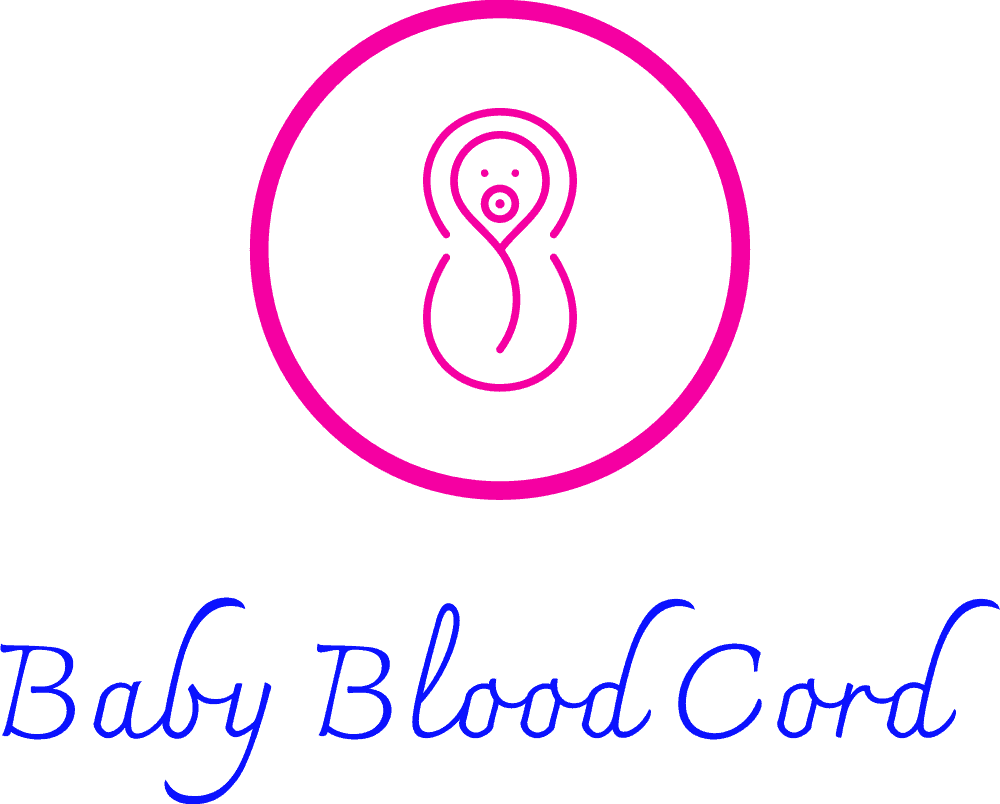
By clicking on either buttons, you are agreeing to our TOS and disclaimers and will be redirected to an affiliate cord blood banking provider. We might get financial compensation if you sign up with them through our affiliate links. Unlock your special discounts by adding your promo code.
CORD300 in the coupon field to get $300 OFF cord blood and tissue banking. OR cord200 to get $200 OFF if you are getting cord blood banking only.
GET YOUR FREE CONSULTATION! CALL NOW

CORD BLOOD BANKING
What is Cord Blood banking
Cord blood banking is a procedure that has been gaining increased attention in the medical world for its potential to help treat a range of diseases and medical conditions.
In simple terms, cord blood banking involves collecting and storing stem cells from a newborn’s umbilical cord. These stem cells are rich in potential and can be used to help treat a range of illnesses, including certain cancers, blood disorders, and genetic diseases. As a result, many expectant parents are now considering cord blood banking as a way to secure their child’s health for the future.
The process of banking umbilical cord blood involves collecting the blood immediately after birth and sending it to a specialized facility for processing and storage.
The cost of storage can vary depending on the service provider and the length of storage time chosen. There are many factors to consider when deciding whether to bank cord blood, including family medical history and the potential future use of the stem cells.
What is cord and tissue banking?
Cord tissue banking involves the collection and storage of the cord tissue, which is the gel-like material that surrounds the blood vessels in the umbilical cord. This tissue is rich in stem cells, which are the building blocks of the body’s immune and blood systems. The stem cells found in cord tissue are different from those found in cord blood, making it a valuable resource for future treatments.
Umbilical cord blood and tissue collection?
Umbilical cord blood and tissue are collected immediately after birth via a non-invasive and pain-free procedure.
The umbilical cord is clamped and cut as usual, but instead of discarding the placenta and umbilical cord, they are collected by a trained healthcare professional.
The blood is extracted from the cord using a sterile needle and collected into a specialized bag with anticoagulants to prevent clotting. The tissue is collected by cutting a small piece of the cord and placing it into a sterile container.
Both cord blood and tissue are then transported to a laboratory for processing and storage.
This procedure is a safe and effective way to collect valuable stem cells that can be used for future medical treatments.


Umbilical cord blood and tissue storage near me
Umbilical cord blood and tissue are valuable sources of stem cells, which have the potential to treat a wide range of diseases.
To ensure the preservation of these stem cells, they are collected at the time of birth and stored in specialized facilities.
The most common method of storage is cryopreservation, where the stem cells are slowly frozen and stored in liquid nitrogen at -196°C.
This ensures that the stem cells can be retrieved and used for medical purposes for many years to come. Additionally, many cord blood banks also offer the option to store the umbilical cord tissue, which contains a different type of stem cell that can also be used for medical treatments.
Overall, proper storage of umbilical cord blood and tissue is crucial for their potential use in future medical treatments.
Questions and answers about umbilical cord blood and tissue banking
What are the benefits of cord blood banking for families?
Cord blood banking can provide several benefits for families, including:
1. Potential medical treatments: Cord blood contains stem cells that can be used to treat certain diseases and conditions, such as leukemia, sickle cell anemia, and some genetic disorders.
Banking cord blood can provide families with a potential source of stem cells for future medical treatments.
2. Family compatibility: Using cord blood for medical treatment can eliminate the need to search for a compatible donor, as the stem cells in cord blood are more likely to match those of a family member than those from a stranger.
3. Peace of mind: Knowing that cord blood is banked and available for potential medical treatments can provide families with peace of mind and a sense of security.
4. Future research opportunities
How does cord blood banking work?
Cord blood banking involves collecting and storing the blood that remains in the umbilical cord and placenta after a baby is born.
This blood is rich in stem cells, which can be used to treat a variety of medical conditions, including blood disorders, immune system disorders, and certain types of cancer.
The process involves collecting the cord blood immediately after the baby is born and cutting the umbilical cord. The blood is then drawn into a collection bag and sent to a cord blood bank for processing and storage.
Families can choose to either donate the cord blood to a public cord blood bank, where it can be used for medical research or provided to those in need, or store it in a private cord blood bank for potential future use for a fee.
How long can umbilical cord blood and tissue be preserved?
The preservation of umbilical cord blood and tissue involves preservation in special structures to preserve their vitality and integrity for future use.
The longevity of the preservation depends on the type of storage and the quality of the preservation process.
There are currently two main methods of preserving umbilical cord blood and tissue: cryopreservation and cryogenic freezing.Cryopreservation: Cord blood can be cryopreserved, typically by using a cryoprotectant solution and freezing at very low temperatures, typically around -196 degrees Celsius (-321 degrees Fahrenheit).
Cord blood stored under these conditions can be stored for long periods of time, with some facilities reporting a shelf life of up to 25 years or more.It should be noted that while cord blood can potentially be stored for several decades, the longer it is stored, the greater the risk of cell damage or loss of viability.
Cryogenic Freezing: Some companies also offer cryogenic freezing of umbilical cord tissue, which involves storing the tissue at extremely low temperatures using liquid nitrogen.
This storage method is relatively newer than cord blood storage. The long-term storage potential of umbilical cord tissue is still being explored, but is expected to have a shelf life similar to cord blood, with claims of up to 25 years or more.
It must be said that the above storage time represents the maximum limit recommended by some warehouses.However, as technology advances and research continues, it is possible that preservation methods will improve, resulting in an even longer shelf life.
It is always advisable to consult cord blood banks for the most accurate and up-to-date information on storage options and expected storage times.
Is cord blood banking safe and regulated?
Yes, cord blood banking is generally considered safe and is regulated by various governmental and professional organizations.
In the United States, cord blood banks must be licensed by the Food and Drug Administration (FDA) and follow strict guidelines for collection, processing, testing, storage, and release of cord blood.
Additionally, professional organizations such as the American Society for Blood and Marrow Transplantation (ASBMT) and the National Marrow Donor Program (NMDP) provide standards and guidelines for cord blood banking and transplantation.
However, it is important that you do your own research and choose a reputable cord blood bank.
Can cord blood banking be done during COVID-19?
Yes, cord blood banking can still be done during COVID-19, although there may be some changes in the procedures and protocols to ensure the safety of the donors and the staff involved.
It is important to check with the specific cord blood bank for their updated guidelines and precautions during the pandemic.
How much does cord blood banking cost?
The cost of cord blood banking varies depending on the company and the type of plan chosen.
On average, it can cost around $1,500 to $3,000 for the initial collection and processing, plus an annual storage fee of $100 to $300.
However, some companies may offer discounted rates or payment plans.
It is important to research and compare different options before making a decision.
What is the difference between cord blood banking vs. bone marrow donation?
Cord blood banking involves collecting and storing the stem cells found in a newborn baby’s umbilical cord for potential future use in treating certain diseases.
Bone marrow donation, on the other hand, involves donating stem cells found in the bone marrow to help treat patients with certain types of cancer or blood disorders.
The main difference between the two is that cord blood banking involves collecting stem cells from the umbilical cord at birth, while bone marrow donation involves collecting stem cells from the donor’s bone marrow through a medical procedure.
How is cord blood banking helpful for leukemia treatment?
Cord blood banking is helpful for leukemia treatment because the stem cells found in cord blood can be used to replace damaged or destroyed blood cells in leukemia patients.
Leukemia is a cancer that affects the blood and bone marrow, causing abnormal production of blood cells. Cord blood stem cells can be used in a stem cell transplant to replace the damaged cells with healthy ones, allowing the patient’s body to produce healthy blood cells and fight the cancer.
Cord blood stem cells have the advantage of being more readily available and less likely to be rejected by the patient’s immune system compared to bone marrow stem cells.
Can cord blood banking help for rare diseases?
Yes, cord blood banking can potentially help in the treatment of rare diseases.
Cord blood contains hematopoietic stem cells (HSCs) that can differentiate into various blood cells, including red blood cells, white blood cells, and platelets. HSCs can also be used to treat rare genetic disorders, immune system disorders, and certain types of cancers.
Research is ongoing to explore the potential of cord blood stem cell therapy for rare diseases.
What research is done with umbilical cord blood and tissue?
Research is conducted with umbilical cord blood and tissue to explore their potential use in medical treatments.
This research includes investigating the use of cord blood stem cells for regenerative medicine, developing new therapies for diseases like leukemia and sickle cell anemia, and exploring the potential of cord tissue for the treatment of conditions like spinal cord injuries and heart disease.
Additionally, research is being conducted to improve the collection, storage, and transplantation of cord blood and tissue to maximize their therapeutic potential.
What is the difference between public and private cord blood banking?
The main difference between public and private cord blood banking is the destination and availability of the cord blood.
Public cord blood banks store cord blood units for use by anyone who needs a stem cell transplant and is a match for the donated cord blood.
These units are usually donated by families who choose to donate their baby’s cord blood instead of storing it privately.
Private cord blood banks, on the other hand, store cord blood units exclusively for the use of the family that has stored it.
These units are typically collected and stored at the request of the family who pays a fee for the storage.
Overall, the main difference is that public cord blood banks make cord blood available for anyone who needs it, while private cord blood banks store it for the exclusive use of the family who owns it and pays for it.
How is cord blood banking useful for regenerative medicine?
Cord blood banking is useful for regenerative medicine because it contains hematopoietic stem cells (HSCs) that can differentiate into various blood cell types.
HSCs can be used for the treatment of various blood disorders, such as leukemia, lymphoma, and sickle cell anemia. Additionally, cord blood also contains mesenchymal stem cells (MSCs) that have the potential to differentiate into various tissue types, including bone, cartilage, and muscle.
MSCs have shown promise in the treatment of conditions such as spinal cord injury, heart disease, and diabetes.
By storing cord blood, individuals can have a source of stem cells that may be used in future regenerative medicine treatments.
How is cord blood banking useful for cerebral palsy treatment?
Cord blood banking can be useful in cerebral palsy treatment because the stem cells found in the cord blood can potentially be used to repair damaged tissues or promote regeneration in the brain.
Studies have shown that stem cell therapy can improve motor function and reduce symptoms in children with cerebral palsy.
By banking cord blood, parents can have a potential source of these valuable stem cells for future use in their child’s treatment.
How is cord blood banking used for genetic disorders?
Cord blood banking can be used for genetic disorders in two ways:
1. Diagnostic testing: Cord blood can be collected at birth and stored for future diagnostic testing if a genetic disorder is suspected in the baby or their family.
The stored cord blood can be used to detect genetic mutations or chromosomal abnormalities that cause genetic disorders.
2. Stem cell transplant: Cord blood contains stem cells that can be used to treat many genetic disorders, such as sickle cell disease, thalassemia, and leukemia.
These stem cells can be used for a stem cell transplant, replacing the diseased cells with healthy ones.
Cord blood stem cells have the advantage of being less likely to cause rejection and can be used even if there is not a perfect genetic match.
What about cord blood banking ethics and regulation?
Cord blood banking ethics and regulation refer to the ethical considerations and regulatory frameworks governing the collection, storage, and use of cord blood stem cells for medical purposes.
Cord blood banking involves the collection of umbilical cord blood at the time of birth and preserving it for potential future use in treating diseases such as cancer, blood disorders, and immune system disorders.
Ethical considerations surrounding cord blood banking include issues related to informed consent, privacy, ownership, and access.
Parents must be fully informed about the implications of cord blood banking and give informed consent for the collection and storage of their child’s cord blood.
The privacy and ownership of cord blood samples must also be respected, and access to the samples should only be granted for legitimate medical purposes.

GET YOUR FREE CONSULTATION! CALL NOW
Table of Contents
Toggle

